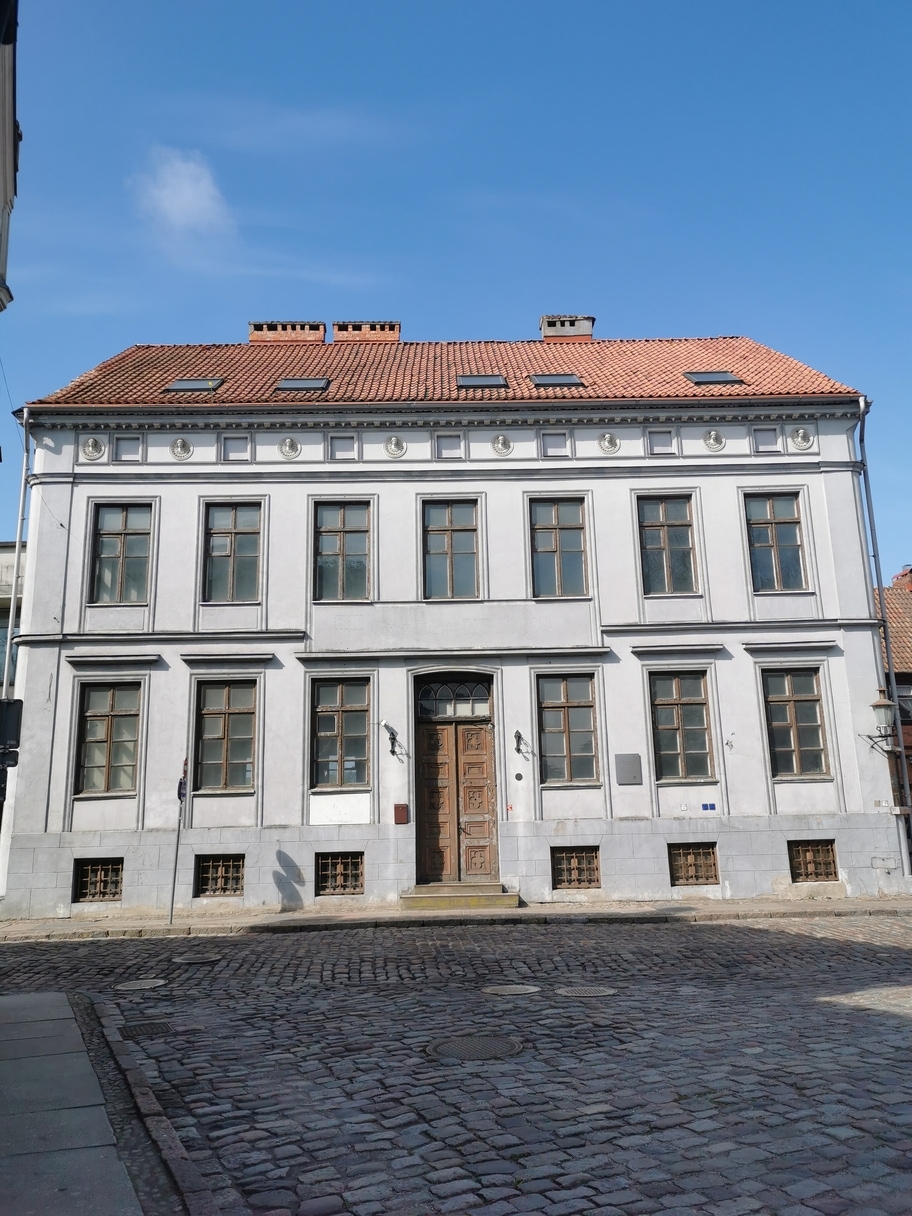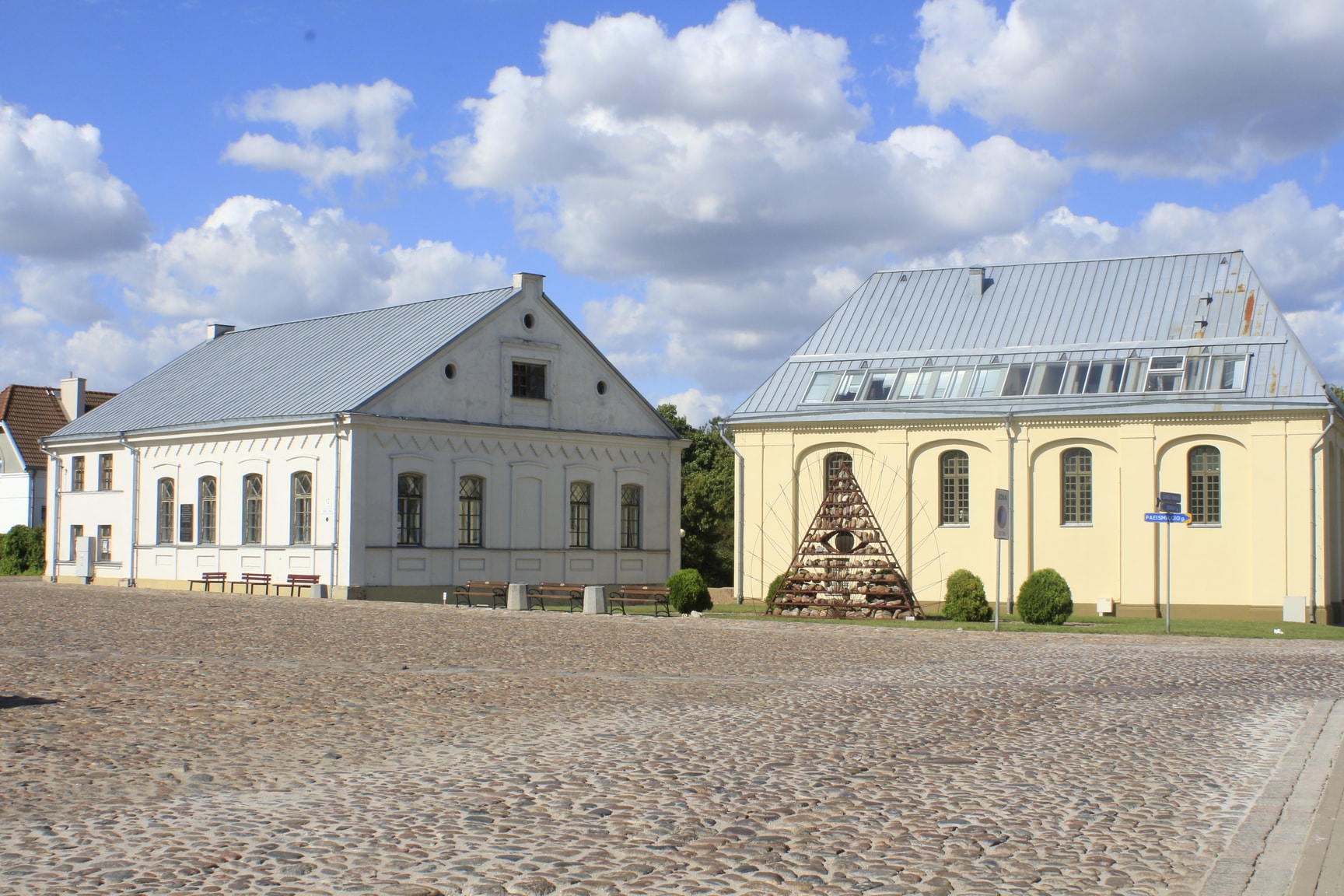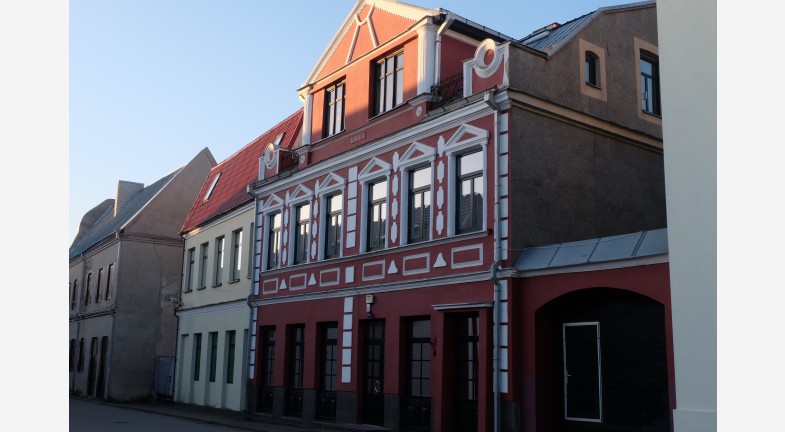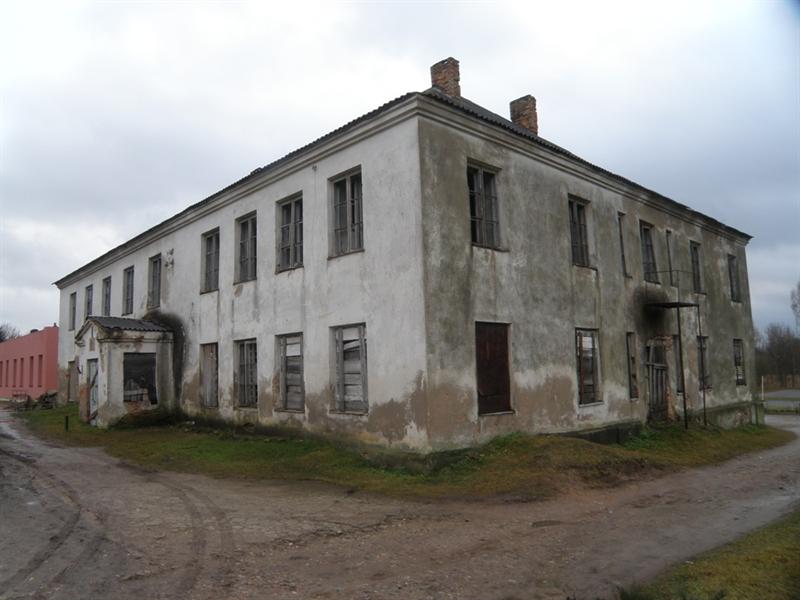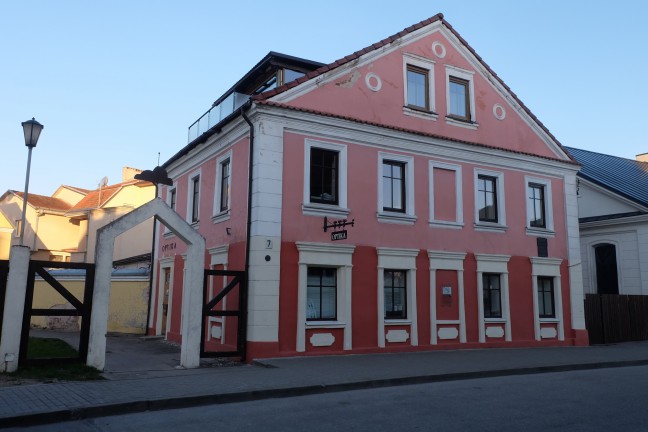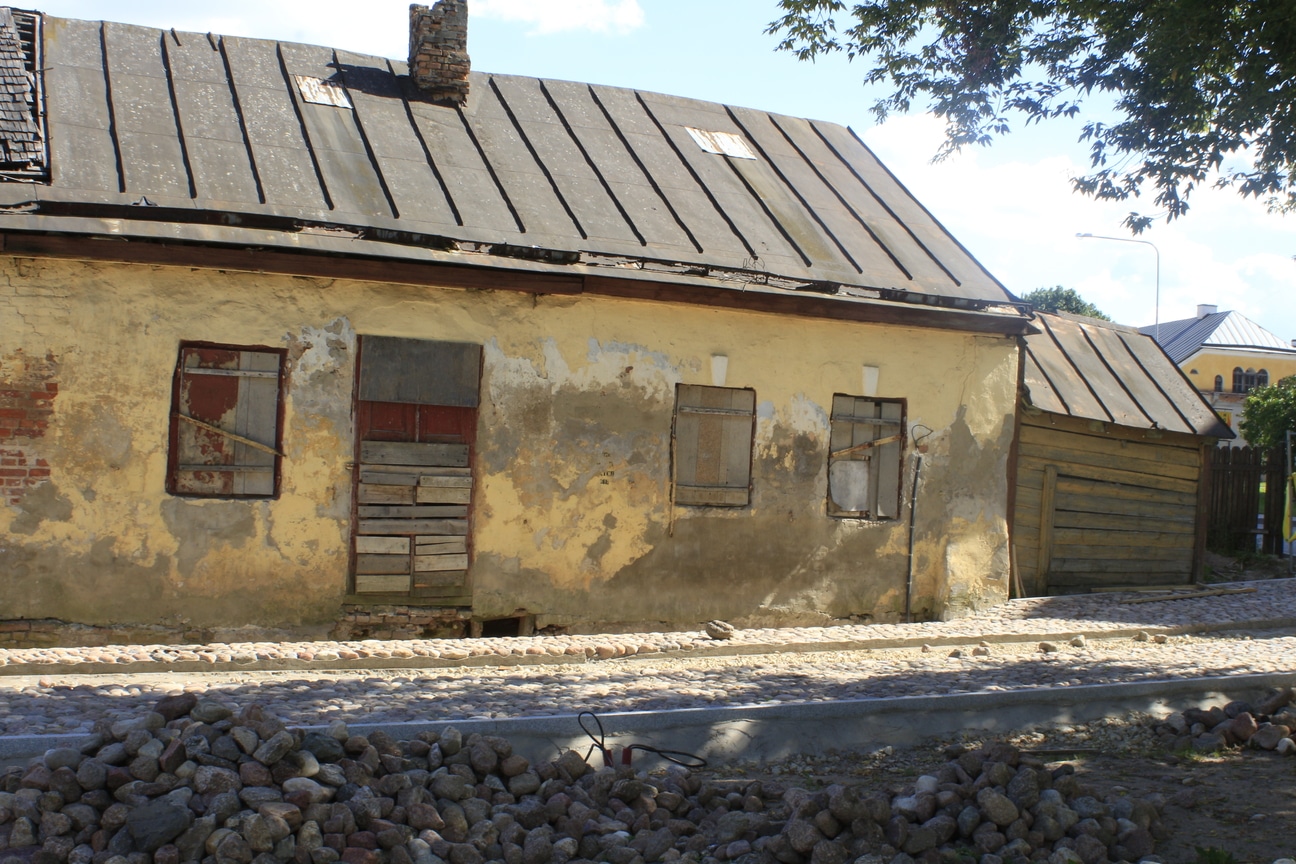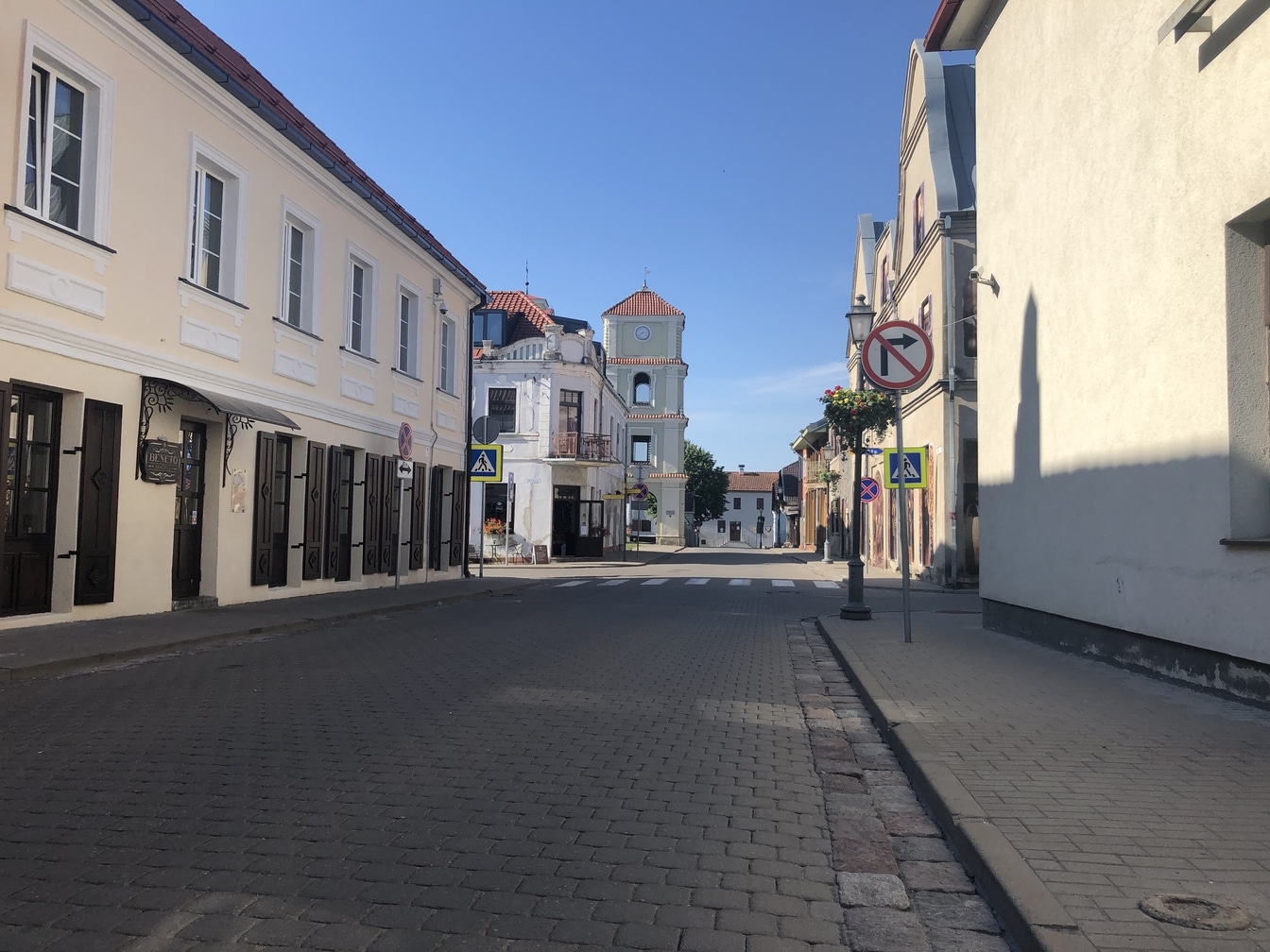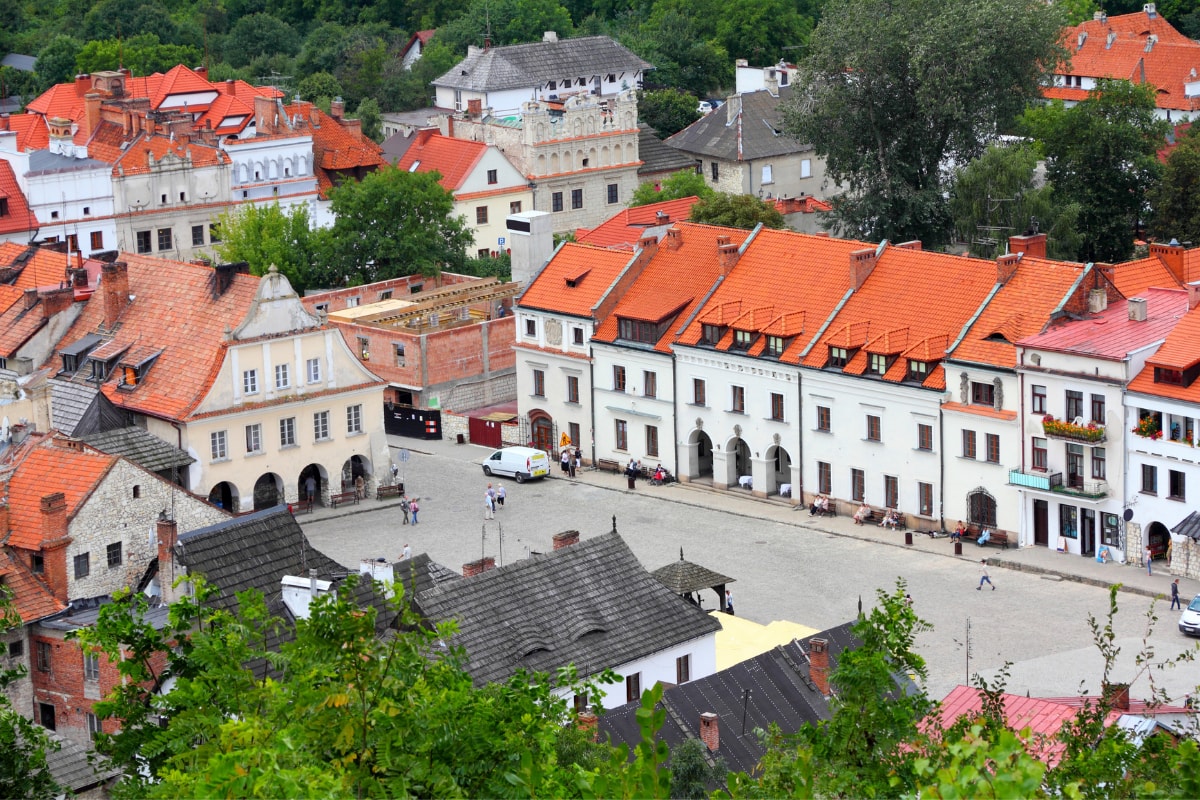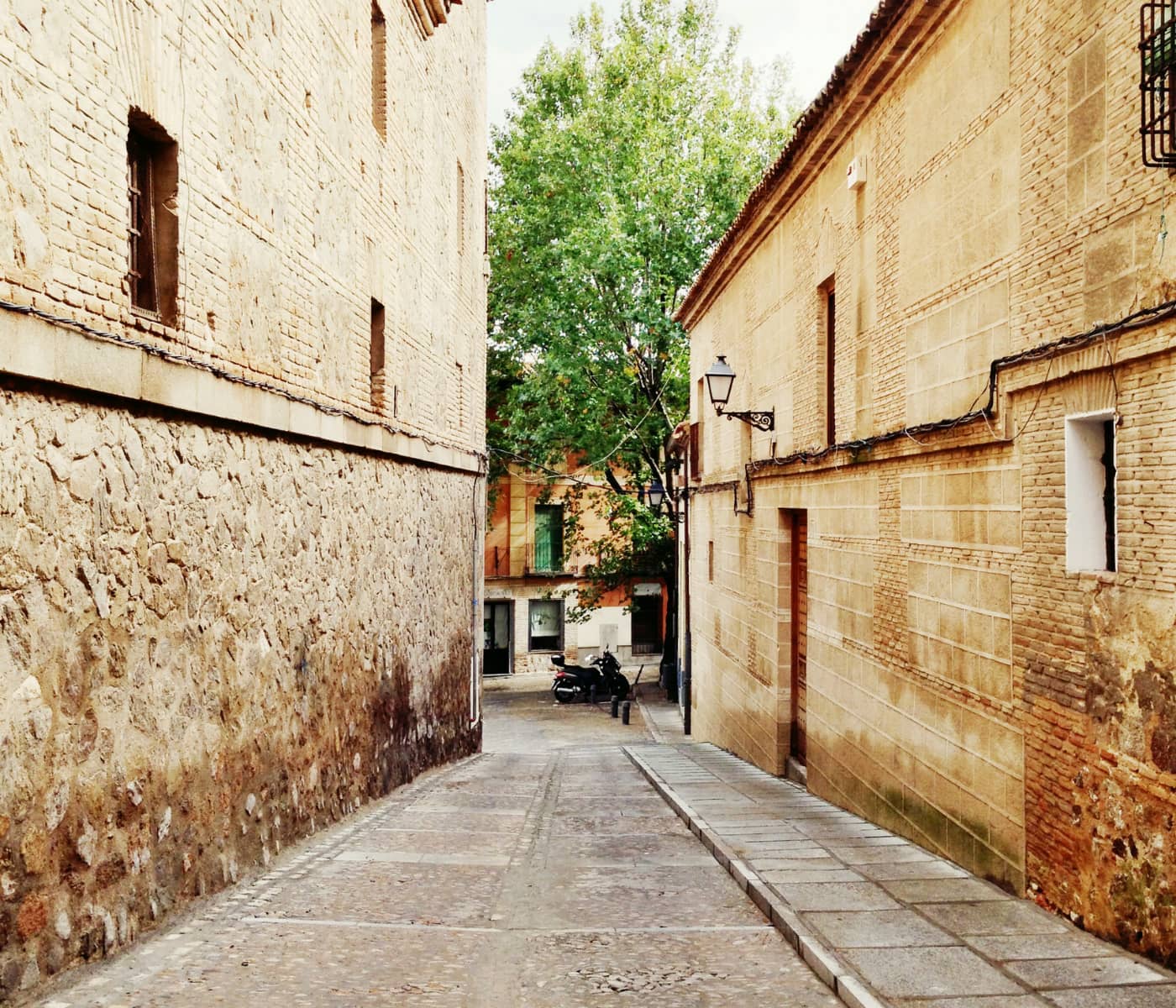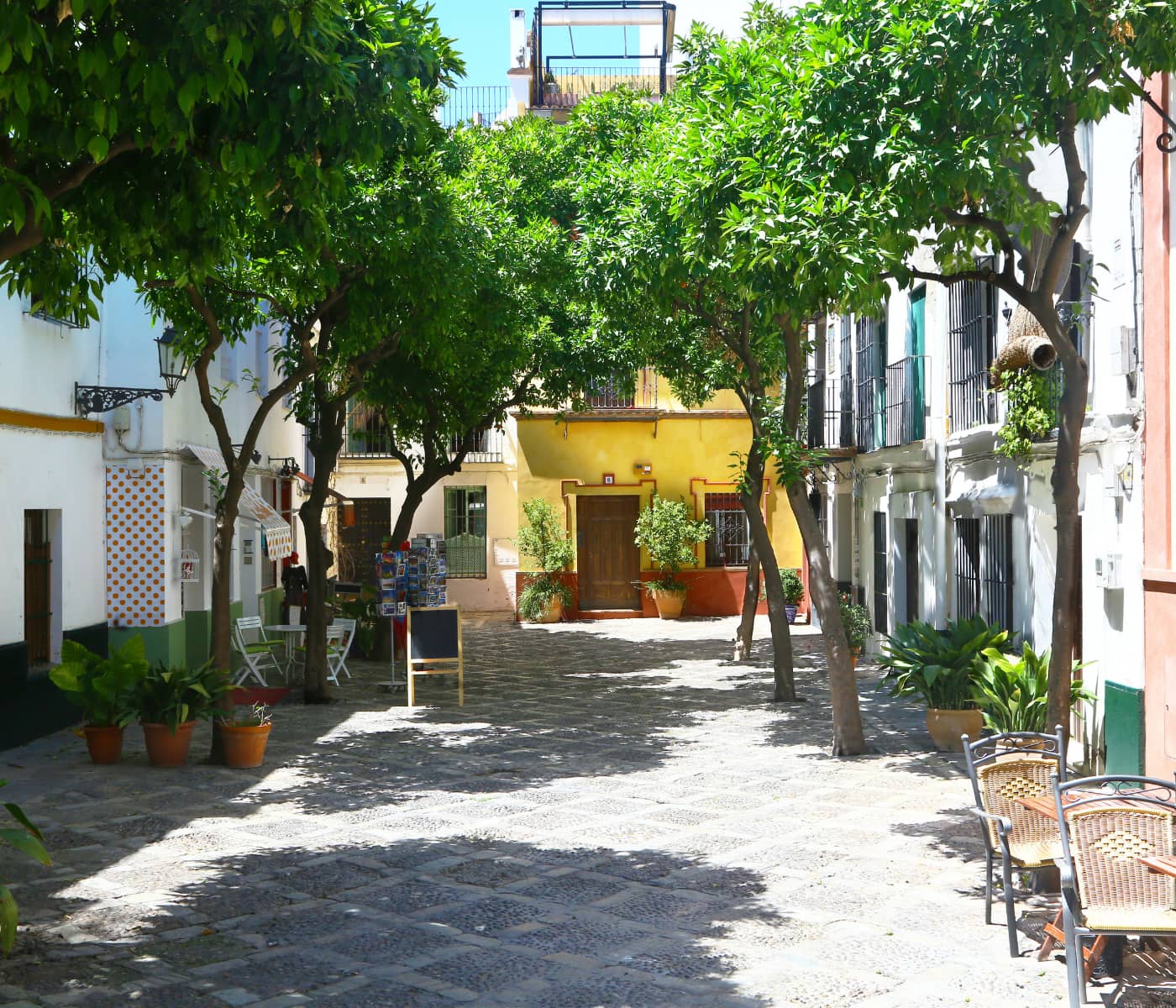A building at the Sukilėlių st. 12 (former Grabenstr.) housed the Jewish Folk Bank. During the interwar period, such banks werw established in almost all the larger towns and cities of Lithuania. Providing small credits to merchants and craftsmen, these banks saved many Jewish families from grave poverty. Due to the peculiar situation of the Territory of Memel (Klaipėda region), the Jewish Folk Bank here also played a rather unusual role – it helped to “Lithuanianize” the region.
Site Tag: Jewish Quarter
Kedainiai Synagogue Complex
Kėdainiai has a synagogue complex that consists of two synagogues: The Great Synagogue and the New Synagogue. The Great Synagogue was built in 1784, replacing a wooden synagogue that burned down during the fire. In the first half of the 19th century, the Jewish community continued to grow, and the need to build additional prayer houses arose. The New Synagogue was built in 1837. On its facade, you can see some features of historicist architecture. Before one hundred years, this place looked different as it was an epicenter of the Jewish community. The New Synagogue housed a custody place. Also, in front of the synagogue, a butcher’s house stood, which was connected to the synagogue by an arc. Since 2002 the building of the New Synagogue is used as a multicultural center, where people have an opportunity to get acquainted with the history of the Jewish community and attend various cultural events. While The Great Synagogue, during the Soviet times, experienced serious reconstructions, and the interior of the synagogue was redesigned. Now the synagogue houses an art school.
Pharmacy of Wulf Polones
A three-story building on Didžioji Street belonged to a Jew Bavilak, who rebuilt it after a fire in 1908, adding to the facade elements of the eclectic architecture. The ground floor was adopted for a shop and the other ones were residential premises. After World War I, the building’s owner was a Jew Wulf Polones, who established there a pharmacy. After the murder of Kėdainiai Jews in 1941, the pharmacy was nationalized and operated until 1988.
Šėta Synagogue
The Jews in the Šėta settlement were mentioned for the first time in 1709. In 1766, they got the privilege to build a synagogue. A synagogue and Beit Midrash (a learning house) were destroyed during a fire in 1878. In 1893, architect Nikolay Andreyev developed a project of a new synagogue and Beit Midrash in one building. The building was damaged during World War I – a roof collapsed, a center of the western part was destroyed. During reconstruction in 1920, this part of the synagogue was divided into two buildings – two separate premises on the ground floor were allocated for women. During the interwar period, the synagogue housed a Jewish primary school and a bank. When the Nazis took over Šėta, the settlement’s residents Jews were driven into Kėdainiai ghetto and murdered together with Jews of Žeimiai and Kėdainiai in Daukšiai village on August 28, 1941. The building of the synagogue remained without a community, after layout change and connection of blocks of the western part was adapted for Šėta Secondary School.
Kedainiai Rabbinic School
A two-story massive square plan building. Elements of classical architecture were added during reconstruction in the 1st half of the 19th century. The house with a vaulted cellar was built in the late 17th century by the town’s Mayor Mykolas Kveravičuus, whose wife Ona Peterson was of Scottish origin. The family had owned the house till 1725. From 1731 till World War II, the house belonged to Jews. During the interwar period, on the ground floor, there were a bakery and Kėdainiai Rabbinic School. Currently, the ground floor of the reconstructed building with classical and eclectic architectural elements is occupied by an optician’s shop and the first floor is residential.
18th Century Jewish House with Sukkah
At the first sight, this building looks like an ordinary wooden building, which managed to survive the test of time. However, this is one of the oldest residential houses in Kėdainiai, built at the end of the 18th century. A small wooden structure attached to the building is the sukkah – one of the most important attributes of sukkot, that is celebrated at the end of September. This feast has two meanings. It marks the end of harvest time, but at the same time, this feast is celebrated to commemorate the liberation of the Jewish nation from slavery in Egypt and their journey to the Holy Land.
Pharmacy of Chaimas Gurvičius
At the beginning of the 20th century in pharmacies, you could find a wide range of products: from medicine to petrol and other oil products. A local Jew named Chaimas Gurvičius bought this pharmacy in 1903, and he often claimed that this building housed a pharmacy since the middle of the 17th century, making it one of the oldest pharmacies in the whole of Lithuania. Gurvičius owned this pharmacy till 1940 when the Soviets occupied Lithuania, this pharmacy was nationalized. Gurvičius owned this pharmacy till 1940 when the Soviets occupied Lithuania, this pharmacy was nationalized.
Kazimierz
Kazimierz is the historic Jewish Quarter of Krakow, now a jumble of indie galleries, quirky shops, vintage clothing stores and bars that range from hip cocktail dens to shabby-chic spaces. Established in 1335, and named after its founder, King Kazimierz the Great, Kazimierz was an independent city for many centuries. It was also home to one of the largest congregation of Jews in Poland and was seen by many as a hub for Jewish life in Europe. Situated just south of Old Town, Kazimierz thrived economically thanks to its many Jewish merchants and the cultural values of the community thrived alongside the businesses.
The Jews of Kazimierz were a real part of Poland, they endured the invasions and political changes throughout the centuries alongside their non-Jewish neighbors. By the time World War II began, there were roughly 64,000 Jews living in Kraków, including 70% of Kazimierz’s residents. The Nazi occupation saw a systematic destruction of Kazimierz’s Jewish population and at the end of the war, less than 4,000 Krakówian Jews had survived in. Jewish life in Kazimierz would be forever changed. The period after World War II was not easy. The community was small and struggled to rebuild. During the communist era, Kazimierz became a seedy district that was derelict and full of despair. Many buildings and historically significant sites were simply left to fall apart. Just a few years after the communist era ended, the town of Kazimierz was rediscovered.
Thanks to the fall of the communist regime and the global attention that Speilberg’s Schindler’s List brought to the region, Kazimierz entered a period of growth and revival. Kazimierz had long been the home of many Jewish synagogues and institutions. Although much of that changed since the war, today the town boasts seven synagogues and several buildings that were once used as private prayer spaces. There are also two Jewish cemeteries, one of which is the historically-significant Old Jewish Cemetery, the burial site to many famous Jews through history.
Today’s Jewish community of Kraków is small but active and growing. Like in the past, it’s nestled in the heart of Kazimierz, and is filled with cafes, galleries, shops and a rich, vibrant culture and history. It is a huge tourist draw for non-Jews and Jews alike. Today, the entire town of Kazimierz is listed as a UNESCO World Heritage Site.
Toledo Jewish Quarter
Rightly regarded as a true city within a city, the madinat al-Yahud, or city of the Jews, constitutes a broad urban space which occupies almost ten percent of walled Toledo. The Jewish quarter of Toledo is divided into different districts, each corresppnding to the different stages of expansion, creating an intricate maze that needs to be marked out in order to gain a real overview of how the Jews of Toledo acted and they lived for at least eleven centuries. Although the oldest written documents date their presence back to the 4th century, in the context of the Roman Toletum, the Sephardi goes further back and relates the Jews to the very mythical origin of the city, deeming it likely that the first Jews arrive in the Iberian Península at the time of the Assyrian and Babylonian exiles in the 8th to 6th centuries B.C.
Barrio Santa Cruz
Santa Cruz is the primary tourist neighborhood of Seville, Spain, and the former Jewish quarter of the medieval city. Santa Cruz is bordered by the Jardines de Murillo, the Real Alcázar, Calle Mateas Gago, and Calle Santa Maria La Blanca/San José. The neighborhood is the location of many of Seville’s oldest churches and is home to the Cathedral of Seville, including the converted minaret of the old Moorish mosque Giralda.
